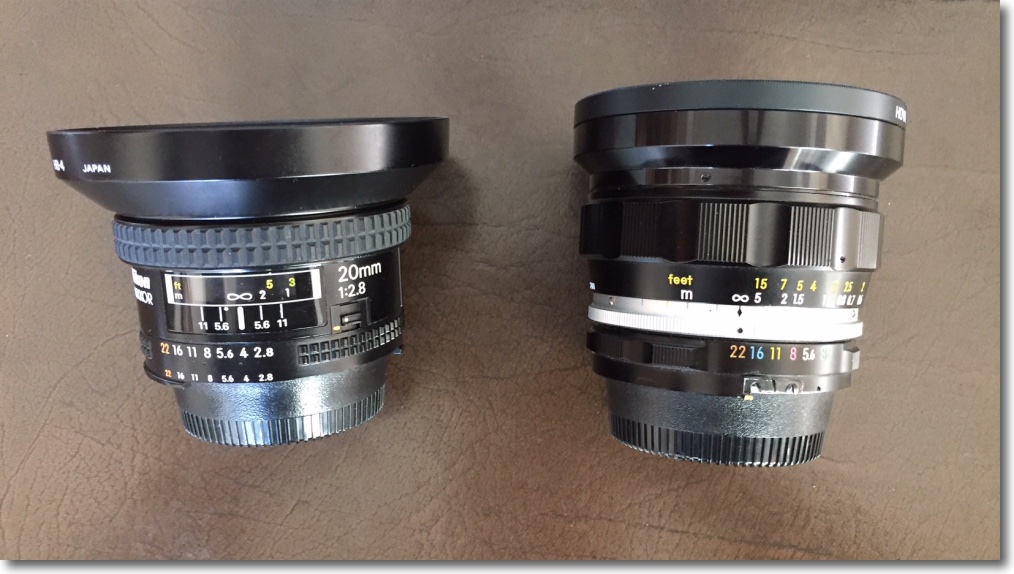Not much changes.
Long term readers may recall that I swapped my 20mm f/3.5 MF AiS Nikkor of 1982 vintage for the much earlier 1973 20mm f/3.5 UD non-Ai Nikkor which I both Ai’d and chipped.
The optical trade-offs were clear. The older lens is superior in the center down to f/8 while the AiS optic delivers better edges fully open and remains better at small apertures. This works for me as the ergonomics and sheer delight in the handling of the 20mm UD remain unparalleled. This is how lenses should be made. After 5 years with the UD Nikkor I am as happy as can be.

Nikon D3x, 20mm UD Nikkor, ISO200.
A much later 20mm f/2.8 AFD Nikkor recently joined my stable and a quick check of performance discloses that Nikon had made little progress in center definition by 1989 when this lens was made. Against the f/3.5 UD, the UD is sharper in the center down to f/8, after which the two are comparable. The AF optic is better at the edges through f/8 (though not as good as the Ai-S predecessor!) and remains slightly better through the smallest aperture. Be sure to keep your fingers away from the focus collar in AF mode as it spins around merrily in finding focus.

AFD lens on the left – competent but ugly.
I’m not publishing test snaps here as they would look much like the earlier ones comparing the UD with the AiS, the only difference being that in Scottsdale my backyard features a lovely desert garden rather than the ugly utility pole from the Bay Area.
The UD weighs in at a solid 14oz, courtesy of its all metal construction, with the plastic-fantastic AF/AFD at a mere 10oz, barely more than the AiS with AF thrown in. Impressive, if not beautiful.
AF is really not necessary in a lens this wide where depth of field covers for focusing errors, but at $230 delivered with Nikon filter, hood and caps, who is complaining?
If you want the last word in central definition and handling, go for the UD. If compactness and solid overall performance is your thing, the AiS is indicated. And for those wanting AF with little weight penalty, the AF/AFD is the right choice, if you can live with all that plastic. The early AF was improved with a revised CPU in 1994 which provides distance metering for Nikon flashes, being renamed ‘AFD’. If you want to save some cash and do not use flash, the AF predecessor has identical optics and mechanics. All of these in mint condition can be found for around $200 but UD variants are hard to find in pristine shape as the scalloped metal focus collar does not take well to hard use and looks ugly once the black anodizing starts coming off. The UD, the oldest optic here, is also the best at controlling flare spots. Not all change is progress ….
There’s also the 20mm f/2.8 AiS MF Nikkor, first sold in 1994 and still available new for almost $700 which I profiled here. For the money asked I really cannot recommend it new or used ($400-$500) as its corner performance is really not much to boast about.
All of these lenses are easily chipped – a simple glue-on operation. The f/3.5 AiS and f/2.8 AiS come Ai’d from the factory. Adding an Ai fork to the UD is not nuclear physics, and I illustrate that in the first link above.
All these 20mm Nikons exhibit the complex ‘mustache’ or wave distortion and for the UD, f/3.5 AiS and f/2.8 AiS you can download my lens correction profile here which fixes that and removes vignetting and most chromatic aberration. The profile for the AF/AFD comes bundled from Adobe with Lightroom and works well.